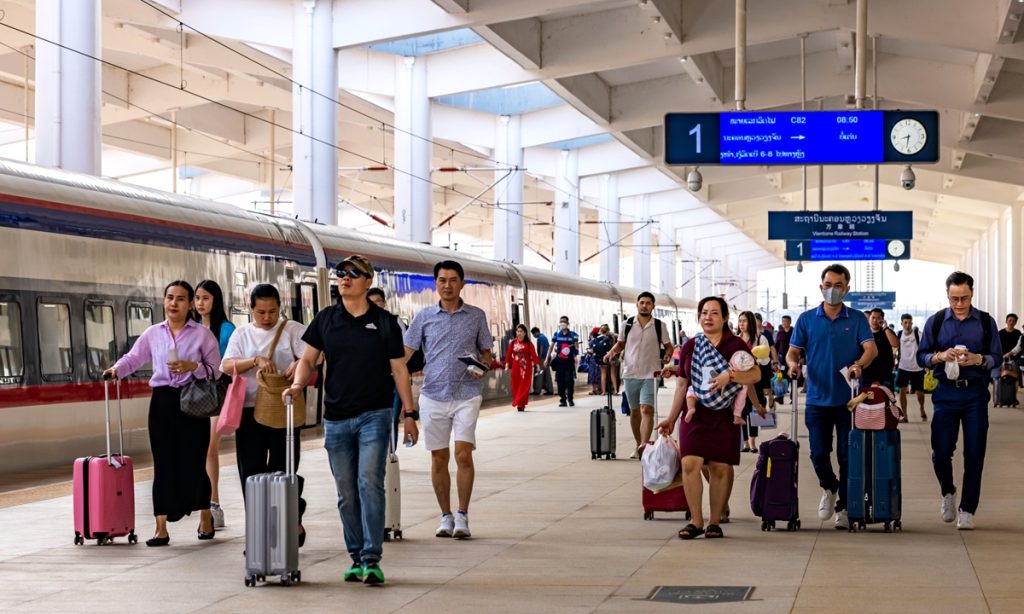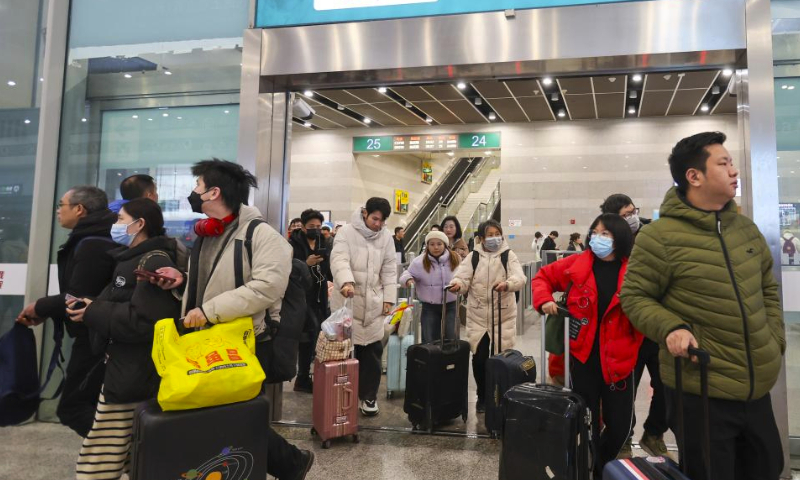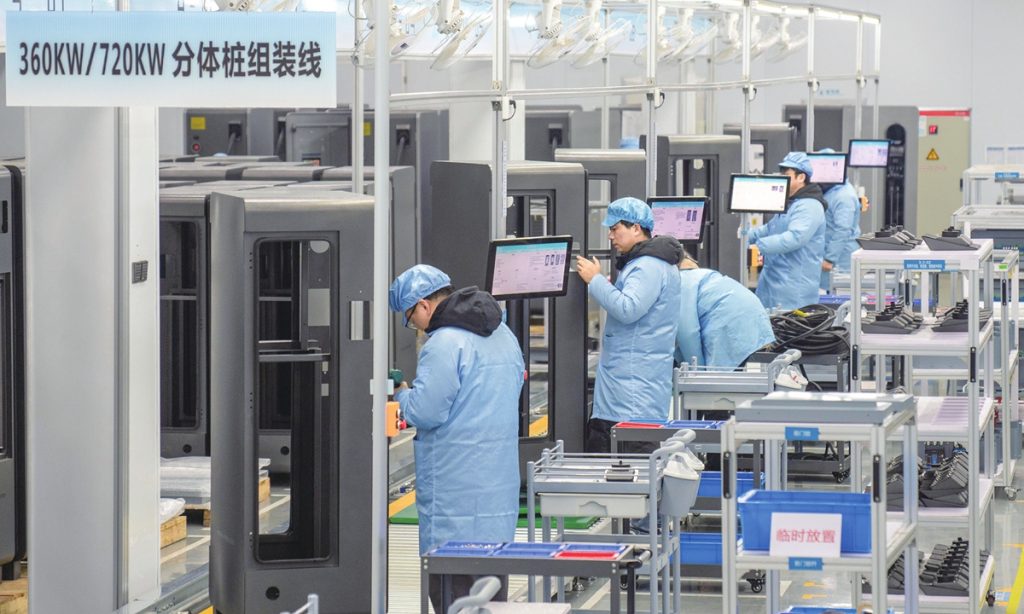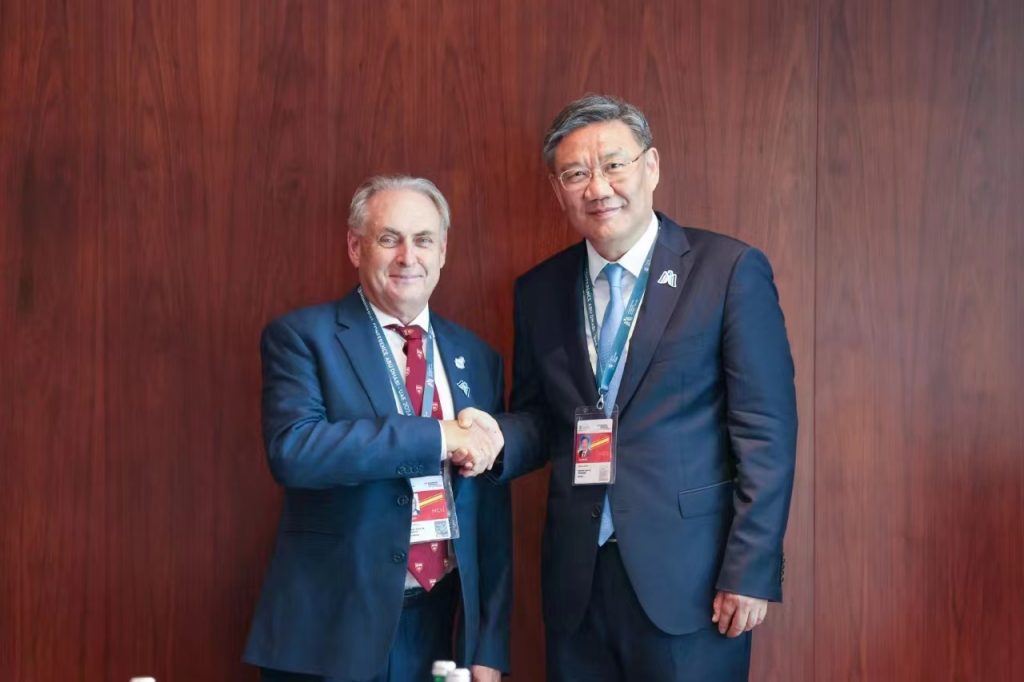China's economy starts off the year on strong note, projecting great confidence in trajectory toward 5% GDP goal this year
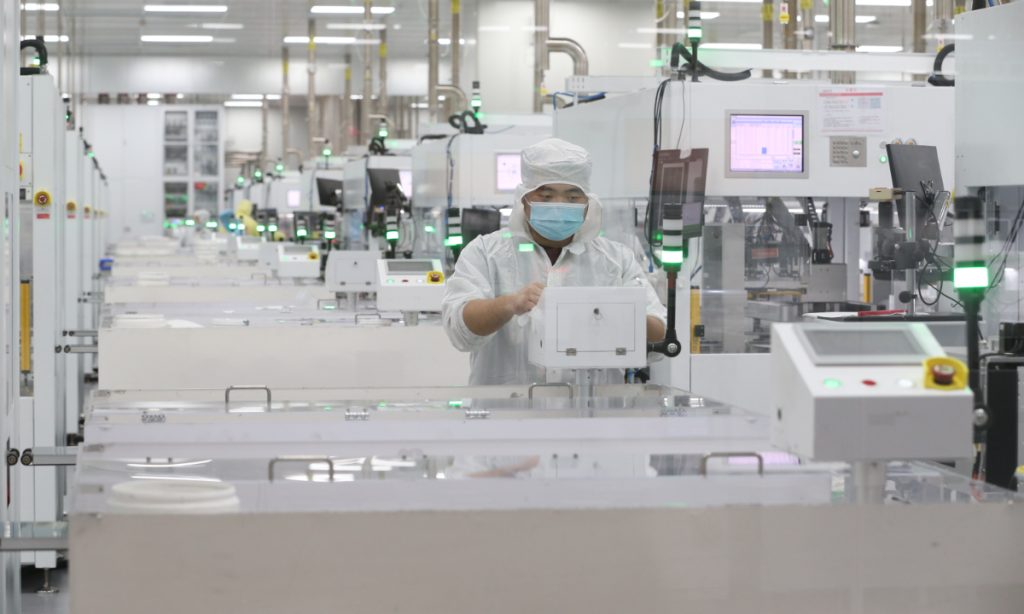
China's economy starts off 2024 on strong footing, with an array of key indicators in the first two months beating market expectation by a wide margin, fueled by a spending spree in the Spring Festival holidays, ramped-up efforts in building new quality productive forces and the effects of macro policies implementation. Observers said the upbeat data offer an encouraging sign that the world's second-largest economy is not only consolidating the recovery momentum but also picking up pace.
The industrial output grew 7 percent year-on-year in the first two months, according to data released by the National Bureau of Statistics (NBS) on Monday, well above the 5 percent forecast from analysts polled by Reuters. It is also the fastest since March 2023.
The strong start in 2024, which presages a raft of bright spots ranging from high-tech to consumption of this year's growth path, also rebuts squarely recent skepticism and badmouths on Chinese economy hyped by certain Western media. It projects great confidence in China's economic trajectory toward a growth rate of around 5 percent in 2024, a goal set by this year's Government Work Report that Chinese officials believe - albeit faced with external and internal headwinds - will come to fruition "with earnest endeavors."
In January-February period, retail sales expanded 5.5 percent from the same period last year, versus a Reuters forecast of 5.2 percent, while fixed-asset investment also gained 4.2 percent in year-on-year terms, surpassing market estimates of 3.2 percent.
"With the macro policies taking effect, China's national economy has continued to recover and turn for the better in the first two months," NBS spokesperson Liu Aihua said at a press briefing of the State Council Information Office on Monday.
Recovery momentum
"The positive macro-economic indicators reflect that the country's GDP growth rate in the first quarter of this year will be higher than 5 percent, and that the economy is bottoming out after facing constant growth pressure seen in the past 10 years or so," Cao Heping, an economist at Peking University, told the Global Times on Monday.
For the first time in a number of consecutive months, the overall gauges on industrial, service and investment all topped the forecasts and displayed a considerable level of gains. And those headline indexes point to a strengthening recovery momentum that is buoyed by restorative growth and, more importantly, multiple new positive factors beyond, according to analysts.
For example, the 5.5-percent jump in the retail sales in the first two months, which though seem to be a moderate number taking account of last year's high base effect, shed light on the indigenous vigor and potential of China's massive consumer market, particularly in entertainment, tourism, cultural, sports and vehicle categories.
During the eight-day Spring Festival holidays in February, nationwide domestic tourism reached 474 million trips, an increase of 19 percent compared with pre-COVID level in 2019, while total expenditure amounted to 632.7 billion yuan, up 7.7 percent from the same holiday period in 2019.
It is forecasted the spending boost will prevail throughout the year, as more stimulus policies take effect and the "pandemic-scarring effect" continues to diminish. China last week unveiled a plan to promote large-scale renewal of equipment and the trading-in of consumer goods, opening up a market worth trillions of yuan and further giving consumption a leg up.
Tian Yun, a veteran economist based in Beijing, told the Global Times on Monday the economic recovery has also shown signs of tilting toward a more "even and balance" mode at the beginning of the year, especially in the demand side, whose recovery - though still lags behind the supply side - has been in a quick catch-up.
Fixed-asset investment, which grew 4.2-percent in the first two months, has "bottomed out" despite a drag by property sector, according to Tian, while ascribing the turnaround partly to the issuance of additional 1-trillion-yuan special treasury bonds in the fourth quarter.
In January-February period, investment in high-tech industries rose 9.4 percent year-on-year, a drastic rise that aligns with this year's economic blueprint laid out during the two sessions, which put the development of new quality productive forces as a core mission.
To reinforce and fast track the recovery in the demand side, Tian suggested that Chinese policymakers to "frontload" part of special-purpose bonds in the first half of 2024.
The Government Work Report stated that China plans to issue ultra-long special treasury bonds starting this year and over each of the next several years. One trillion yuan ($139 billion) of such bonds will be issued in 2024.
In 2023, fixed-asset investment staged a growth of 3 percent, NBS data showed.
In terms of supply, Liu Aihua said at the press briefing that industrial production will continue to play a ballast role in the national economy. She highlighted new drives from China's elevating innovation capacity amid manufacturing upgrade and transformation, in addition to traditional edges such as a complete industrial chain as well as the sheer size of the market.
Confidence behind the target
Following the set-up of an annual GDP growth target in early March, Chinese doomsayers have been gone to great lengths to raise doubts on the likelihood of the country to achieve a 5-percent goal. So the highly-anticipated economic data at the start of the year also timely draws out an objective and comprehensive picture on China's economic course, proving that the country is running on abundant engines - which certain Western media outlets ignore, that arguably outweigh unfavorable conditions, analysts said.
While acknowledging a bunch of downward pressures including "complex, severe and uncertain external environment and insufficient domestic effective demand," Liu stressed that China has conditions and enough support to hit the around 5-percent GDP growth target, and will realize the goal "through earnest endeavors."
Liu said Chinese authorities attach great importance to the challenges that could pose barriers to development. They also stand with great confidence and maintain strategic focus to cope with difficulties, promote sustained economic recovery, and translate the expected economic development goals into reality.
Han Baojiang, a professor at Party School of the Central Committee of the Communist Party of China, told the Global Times that Chinese policymakers are sober and they have articulated clear approach to economic development. "As long as we improve our economy, enhance people's livelihoods, and ensure employment, it is probably the most effective way to deal with all challenges."
Cao also voiced full confidence that the country will realize this year's GDP growth target of around 5 percent, though he said more effort is needed to focus on high-quality development.
To shield against potential headwinds, Cao suggested that authorities should continue to promote the transition in overall economic structure, focus on developing new quality productive forces, like new industries to be propelled by artificial intelligence.
Analysts warned against the property downturn, which they said is likely to persist for some time this year. In the first two months, China's property investment dived 9 percent year-on-year, NBS data showed.
Also, the increasingly volatile external environment calls for Chinese policymakers to reach more into the toolbox to stabilize and shore up internal demand, according to Tian. Liu said the country's solid economic fundamentals, the accumulation of many positive factors and the government's stimulus measures will continue to propel the economy to rebound and improve.
Tian predicted that China will continue making an "immense" 30 percent contribution to the world economy on condition that the 5-percent GDP growth goal is achieved, making it the second-largest only after the US.
